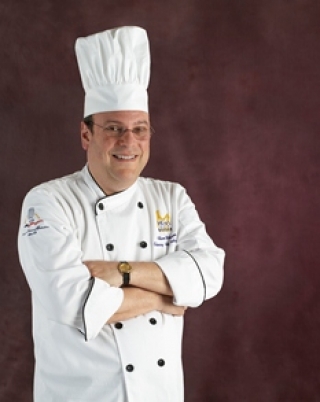
Taste Something New for the Holidays
02 December 2015Students need to embrace new tastes and textures but often resist. Chef Weiner explains new avenues to broadening taste horizons and increasing flavor diversity.
By Chef Adam Weiner, CFSE
Last December I wrote “Fun and Profit with Gingerbread.” This year I would like you to consider using the holidays as a way to teach finicky students to taste outside their comfort zones.
In my 12 years of teaching an introduction to professional cooking course, it has truly astonished me how reluctant most students are to try new or different foods. I just don’t understand how someone who wants to be a culinary professional doesn’t want to try something new. What further amazes me is that this applies to sweet dishes as well as savory. Try having a student see and taste baklava or mochi for the first time. Say “green tea ice cream” to most people who have never heard or tried it before and they will cringe and gasp in horror.
Gently coercing students to do this is axiomatically important to their culinary education. It forces them to move away from only cooking what they like according to their personal preferences. It steers them into cooking how the guests and customers (and more importantly bosses) want when they are in the work force. Also, one cannot grow in the art of cooking if the person restricts herself or himself to a small basket of ingredients cooked only in specific ways.
I have developed a series of schemes to get reluctant students to taste new foods:
- Don’t offer them a choice. This is what we are serving, and if you don’t like it then go hungry. As anyone who is a parent knows, this isn’t particularly effective.
- Do the old “bait and switch.” I learned this one in graduate school. I had a roommate who said he despised lamb. He ate many of my “meat stew” and “braised meat” dishes, which he adored. I told him the truth on graduation day. (NOTE: You can only do this if the student says that she or he doesn’t like the food. If they are allergic to the food then you must not serve it to them. Please see my September 2015 article on allergies.)
- Have students research cuisines outside their own comfort zones and prepare those dishes for class. The more students know about a cuisine and the culture behind it, the more they will be inspired to try something new. This will take several class periods.
- Have students prepare something from their culture and share it with the class. This is really great if you have an ethnically diverse class. If your class is homogenous then you have to resort to number three.
My favorite is to combine numbers three and four. First, I have students research a culture and cuisine different than their own ethnic heritage and have them prepare a dish or two for the class. Then I have the same groups prepare a cuisine from their own ethnic background. For further details on how to do this, please see my May 2010 article “Teaching International Cuisine in 50 Minutes.”
We are in the holiday season. Almost every student will have at least one special holiday savory and sweet dish which they could share with the rest of your class. Have them prepare one dish and before others can sample it, have the student explain a little about their family’s involvement and history with the dish.
Then, in January when you make something that some of your students refuse to try, you can remind them and say, “Remember that dish that Frederica made in December that you were reluctant to try? You tried it and then went back for seconds.”
Chef Adam Weiner, CFSE, teaches a 20-week Introduction to Cooking program for JobTrain on the San Francisco Peninsula, and is a frequent presenter at CAFÉ events throughout the nation.
